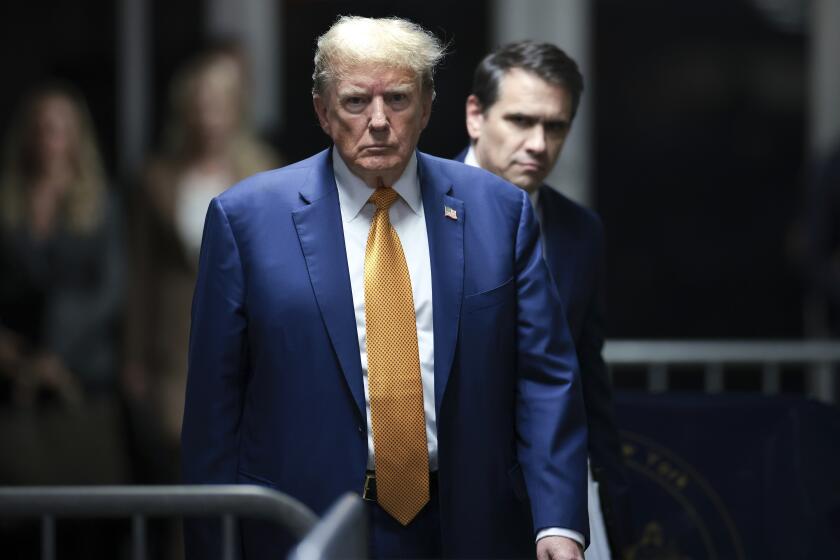Deep Roots to Korean Labor Unrest : Unless Traditions Change, Better Pay Will Not Soothe Workers
The surge of worker discontent in South Korea stems not simply from economic dissatisfaction but from a complex set of cultural and political reasons.
In a Confucian society, benevolence and trust--not contracts--are the basis of human relations. Thus labor unionization, which assumes legal and often adversarial relationships between workers and management, began as a rather foreign concept.
Anti-communist impulses stemming from Cold War politics during the 1940s combined with the cultural resistance to further hamper labor unions. The American military command, which ruled South Korea from 1945 to 1948, cracked down on nascent, worker-initiated unions as part of an anti-leftist campaign. In their place, the command created the National Labor Federation, singularly committed to anti-communism.
So labor unions began with a bad limp. Weak unions, however, do not necessarily mean unrestrained exploitation of the workers. Japanese workers have flourished despite insipid unions.
In South Korea, experts cite cheap labor as an indispensable ingredient of the country’s model of economic growth through exports. But the predicament of the workers in South Korea is not attributable solely to the imperatives of an export-oriented developmental strategy.
First, Korean financial conglomerates had to rely largely on government loans or the allocation of U.S. aid dollars for start-up and operating capital. Accordingly, they fell easy prey to government manipulation, as evidenced by the sudden and inexplicable rise and demise of many conglomerates. Precarious existence breeds an unhealthy appetite and an unsharing attitude.
Korea’s feudal tradition also undermined the notion of reciprocity between labor and management based on moral obligations--an intrinsically Confucian norm for which Japan is best known. In feudal times, the lord’s benevolence and generosity were repaid with the subjects’ loyalty and discipline. Within the context of modern labor-management relations, contracts and unions would become perfunctory because high worker productivity and loyalty would be rewarded with generous benefits and job security irrespective of contract or unions. But Korean tradition was that of a strong central power, which made ruler-subject relationships highly one-sided. Spontaneous reciprocity never took root.
Finally, export industries were initially neither diversified nor technologically advanced, and textile and light consumer goods made up the bulk of exports. Thus the raising of wages would not have expanded the domestic market for these industries, because their products were beyond the level of domestic consumption. Industrialists, therefore, held the wages down and used the increasing profit to expand and diversify production.
If these are some of the major reasons for the lowly existence of the Korean workers, they are not the only issues that have to be addressed in resolving the labor unrest:
--The degradation of labor is inextricably linked to the discrimination against women. Female laborers, representing half of the total work force, are subjected to harshly discriminatory labor practices and earn pitifully less than male workers do. Female workers and professionals are forced to resign on marriage. Most young women in manufacturing live in dormitories and net less than $100 monthly while working more than 200 hours.
--Although they are the largest group in society, Korean workers have never had any political representation. Workers have human needs and wants beyond higher wages and agreeable working conditions. They need an institutional forum to articulate and press for their human, not just worker, interests.
Better wages and limited unionization, therefore, will not provide an enduring solution to the labor unrest.
The case in point is Hyundai, the nation’s largest conglomerate, which was pressured by the government to permit the organization of Hyundai unions. Because work-site unions are vulnerable to management manipulation and control, this is a limited, albeit welcome, development.
Obviously the government must do more than posture as a mediator between labor and management. It has to strive for a fundamental solution including legislation providing equal and fair treatment of female workers, improvement of rules and regulations regarding work safety, restoration of workers’ collective rights, and the right to organize industrywide unions.
Otherwise labor unrest will recur or persist, thereby endangering the future of South Korean democracy and the economic and security interests of the United States in the peninsula.
More to Read
Start your day right
Sign up for Essential California for news, features and recommendations from the L.A. Times and beyond in your inbox six days a week.
You may occasionally receive promotional content from the Los Angeles Times.






